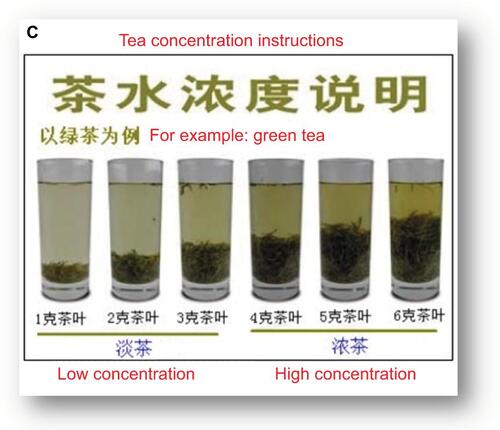Figures & data
Table 1 Tea drinking type distribution of the study participants enrolled in a population-based case–control study on esophageal squamous cell carcinoma in Taixing, China (N=3,317)
Table 2 Demographic and lifestyle information of the study participants enrolled in a population-based case–control study on esophageal squamous cell carcinoma in Taixing, China (N=3,308)
Table 3 ORs and 95% CIs for esophageal squamous cell carcinoma in association with green tea drinking among men by unconditional logistic regression (N=2,266)Table Footnotea
Figure 1 (A) The association between accumulation of tea drinking and the risk of ESCC among men by restricted cubic spline regression. (B) The association between accumulation of tea drinking and the risk of ESCC among men by tea temperature by restricted cubic spline regression.

Table 4 The joint effects of tea drinking and alcohol drinking on esophageal squamous cell carcinoma risk among men by likelihood ratio test (N=2,266)
Table 5 The joint effects of tea drinking temperature and alcohol drinking intensity on esophageal squamous cell carcinoma risk among men by likelihood ratio test (N=2,266)Table Footnotea
Figure S1 Questionnaire of tea drinking and the related sample images.
Notes: (A) The translated questionnaire of tea drinking. *Temperature of the tea: 1) very hot – drink immediately (less than 1 minute); 2) hot – wait for a few minutes before drinking (1–5 minutes); and 3) warm – wait for more than 5 minutes before drinking (more than 5 minutes). (B) The related sample images – the display of tea cup size, and (C) the instruction for defining tea concentration (original text with translations included).


Figure S2 The interaction between green tea drinking and other selected risk factors on the risk of esophageal squamous cell carcinoma by likelihood ratio test.

Table S1 Prevalence of tea drinking habit (with different tea temperature at consumption) by selected risk factors for ESCC in male controls in Taixing, China, 2010–2013
